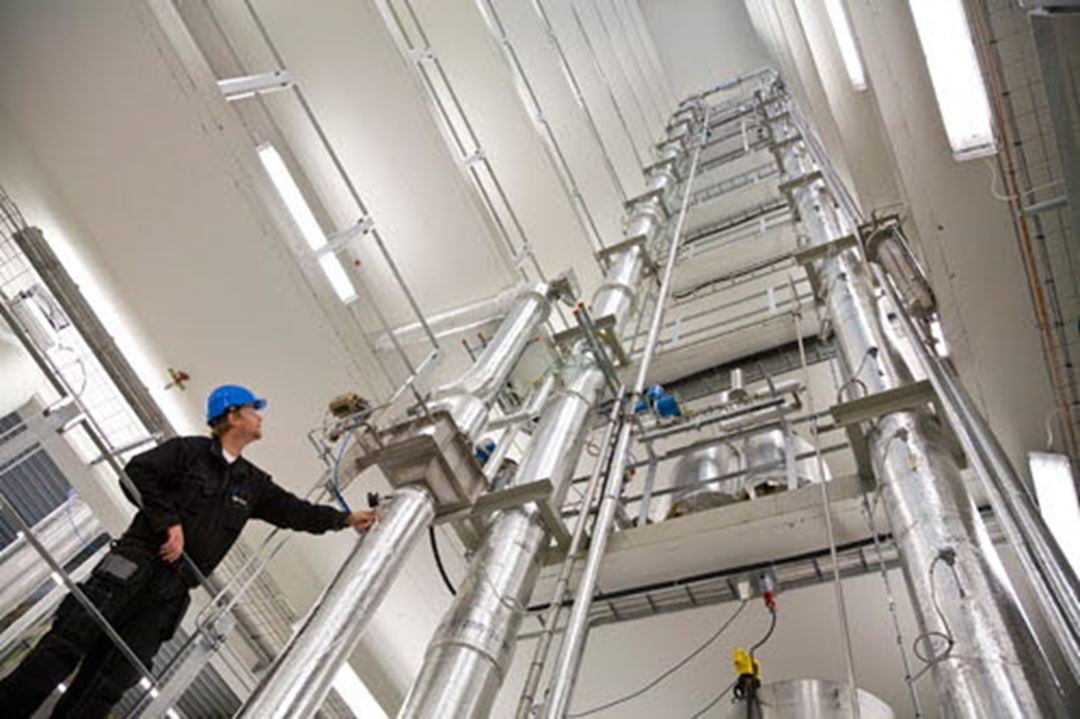Natural gas contains more than just hydrocarbons. As part of the natural gas value chain, the well stream must be processed and conditioned. In this process, impurities such as CO2 and H2S are removed down to a level that satisfies specifications for LNG production or pipeline transport. Moreover, the water content must be reduced in order to avoid liquefaction and hydrates in the gas pipelines. For all these gas purification problems absorption (physical or chemical) is the most important technology on industrial scale. Absorption is the most common method used by industrial large-scale plants for of solving challenges related to gas separation.
Flue gases from fossil fuel combustion contains CO2 that should be removed for greenhouse gas control, and SO2 (sulphur dioxide), that must be controlled to very low levels. Also for these applications, chemical absorption is the most common purification technology. Absorption processes work by contacting the gas to be captured, for example CO2, with a chemical in an absorption column. This can be advanced chemical mixtures or pure solutions where CO2 is dissolved physically. Through a combination of temperature changes and pressure changes in a simple or advanced process design, pure CO2 is released in a desorption column, while the purified gas is processed further or released to air. The absorption medium (solvent) must have specific properties so that it only reacts with the CO2, and let the other gases pass through. Solvent development aims at optimizing the solvent formulation to a particular purification problem by achieving the lowest possible energy requirement in an efficient, stable and environmentally friendly process.
SINTEF has a state of the art pilot facilities and laboratories, simulation tools and strong cooperative relationships with domestic and international partners. For development of improved/new absorption processes SINTEF can perform the following measurements:
- Gas / liquid equilibria for CO2 and H2S
- General phase equilibria (VLE, VLLE) for low and high pressure systems in gas/liquid processing
- Reaction Kinetics of CO2 and other gases with solvents (e.g. Amines)
- Amine degradation chemistry (from reaction mechanisms to process design and mitigation)
In addition, we measure several essential physical and chemical properties:
- Specific heat capacity
- Reaction enthalpy
- Viscosity
- Thermal conductivity
Our research are carried out in close cooperation with the SINTEF MS Lab that includes a large number of techniques based on mass spectrometry. This partnership enables a full characterization of solvents.

